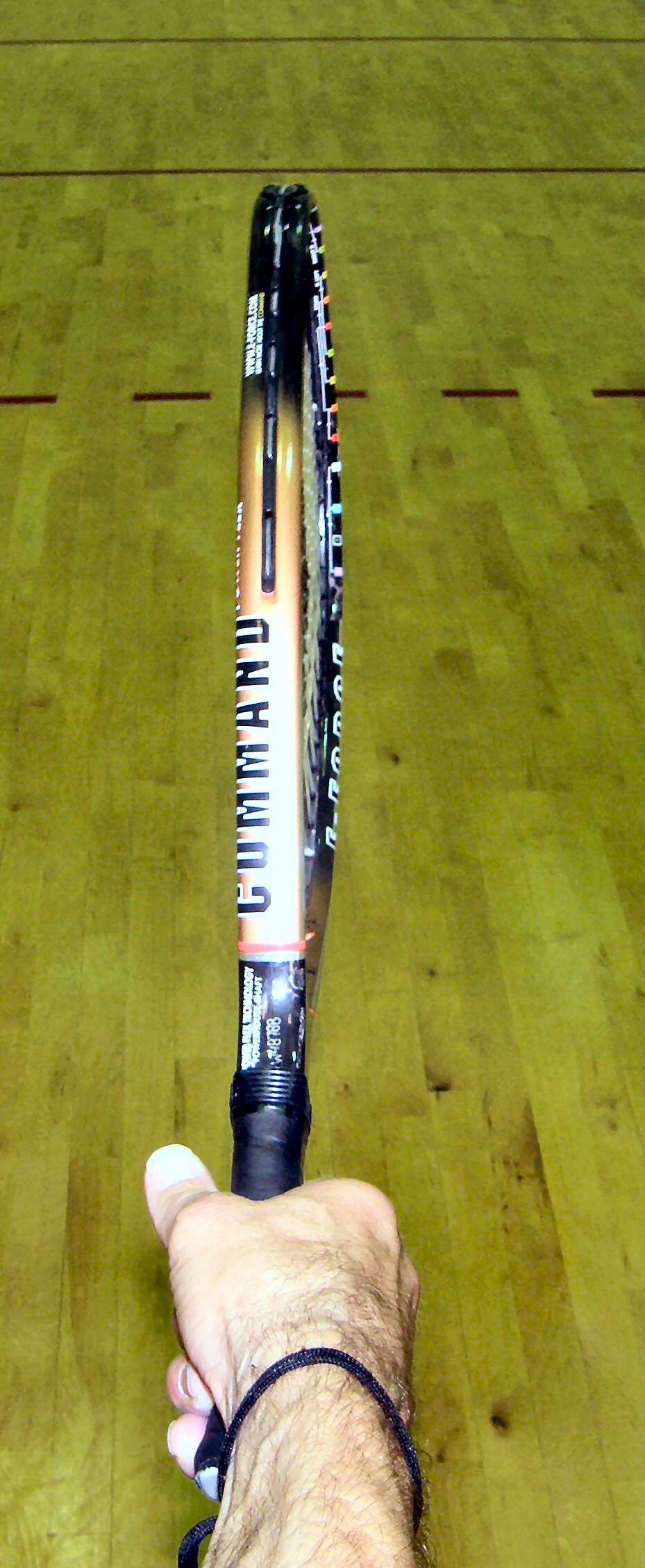
The racquet
handle has a flat side on top, two slanted, beveled edges on each side
and two flat sides. Call the middle of the top, flat edge 12 o'clock.
Call the
edge of the bevel that meets the top on the right side 1 o'clock and
the edge
of the slanted edge that meets the right side edge 2 o'clock. The
middle of the
right side edge would be three o’clock.
Now "shake hands with the racquet." Once you have gripped the racquet, extend your forefinger and your thumb. Hold the racquet loosely, down in your fingers, not up in the palm of your hand. This is the standard forehand grip. The V between you thumb and forefinger is at 12 o'clock.
For a more aggressive forehand grip, adjust the racquet in your hand so that the V between the thumb and forefinger is at 1 o'clock, just at the right beveled edge.
For an even more extreme forehand grip, adjust the racquet so that the V is at the 2 o'clock position. This position gives you more power, but is less forgiving than the more standard forehand grips. You must keep your elbow "in the slot" and hit the ball at the front of your front foot. If you hit the ball deep in your stance or allow your elbow to fly out away from your body (so that the butt of the racquet never faces the front wall), you are very likely to skip the ball.
You can also generate the extreme forehand grip by holding the head of the racquet in your left hand so that the racquet is parallel to the floor and putting the racquet on your left side at about waist level, as if it were a sword in a sheath. Reach across your body and grab the handle with your right hand. Pull the sword from the sheath. Now, extend your pointer finger and your thumb. That is the extreme forehand grip.
Remember, the more extreme the grip, the more power, but also the higher the chance of skipping the ball.
Now let the edge where the bevel meets the top on the left side of the racquet be 11 o'clock, the edge of the bevel near the left side 10 o'clock, and the middle of the flat left side 9 o'clock.
For the standard
backhand grip, shake hands with the racquet and rotate it so that the V
between your
thumb and forefinger is at 11 o'clock, over the left hand bevel edge.
Keep the racquet down in your fingers, not up in the palm of your hand.
Keep your grip loose and relaxed.
For a more aggressive backhand grip, put the V of your hand at 10 o'clock.
Finally, the most extreme backhand grip, the "frying pan" grip is achieved by rotating the racquet such that the V is at 9 o'clock, in the middle of the left side of the handle. The frying pan generates the most power, but is very difficult to control.
The standard backhand
generates the least power, but is
much more forgiving and easier to control. The 10 o'clock backhand is a
compromise. It generates more power, but is also less forgiving than
the
standard grip.
When you hit the ball with
your forehand the palm of your hand absorbs the shock. When you hit the
ball with the backhand, you are relying on the one point of contact
with your thumb to take the shock. For this reason, some players put
their thumb on the back side of the racquet handle in the backhand for
additional support.
Another way to
make sure you have a good backhand grip is to hold the racquet with
your left
hand so that it is perpendicular to the floor. Place it against your
left side
as if it is a sword in a sheath. This is exactly like the forehand
example,
except the racquet is vertical instead of horizontal. Reach across your
body
and grab the handle with your right hand. Draw your sword from its
sheath.
Extend the pointer finger and thumb. This is the standard backhand grip.
If you find
yourself skipping the ball frequently, you might want to check your
grip and
perhaps change to a less extreme grip. If you want more power, you
might try a more aggressive grip.